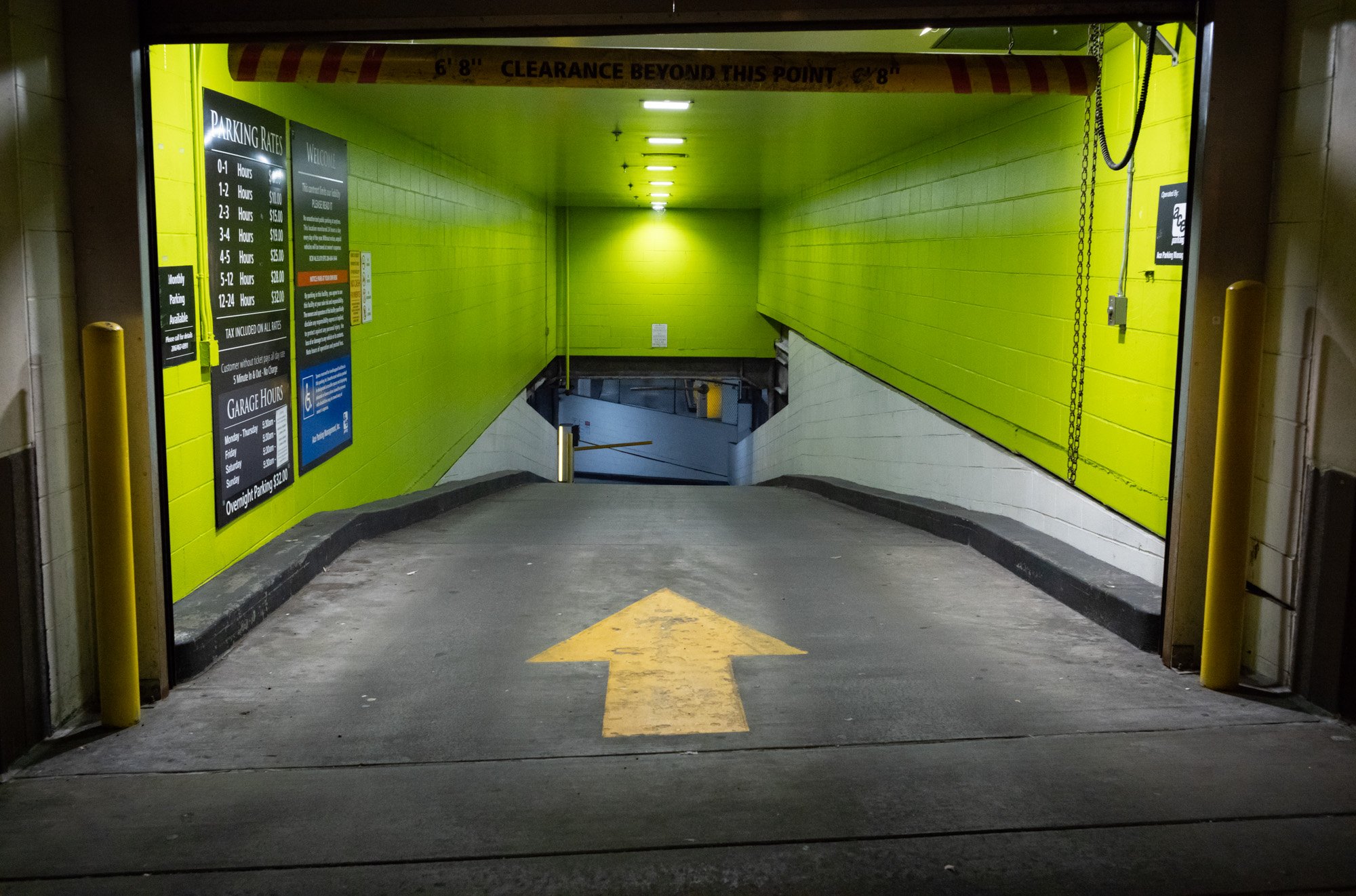Images in Search
It’s possible that the precedent for snippets or summaries in search and suggestion engines is creating mass confusion. Low-quality, autogenerated metadata, and particularly the metadata generated on digital images in those snippets, may be the crux of the confusion. Search engines based on low-quality metadata decontextualize image assets. The chaotic displays of images in social media and search engines conflate issues and themes and consequently contribute to a societal information crisis.
A parking garage is illuminated on March 20, 2024 in Seattle, Washington, USA.
The search engines are more problematic than archives and publications due to suggestion engines and targeting. Publications use slideshows or design narrative flows and archives are structured. The problem is that search engines will return an image out of context even if published as part of a narrative, or add an incorrect context (i.e. grouping all news events together). The decontextualization is due to low-quality, machine generated data and convenient groupings of results.
The result of this decontextualization is a cycle of optimization on the management side and miscommunication on the consumption side. Information architecture is rooted in the information sciences, a field that has confronted problems of disorganization throughout history. Thus, it’s interesting that some historical IA techniques (such as keywords and taxonomies) may not be suited to fully address the current situation.
It may be necessary to rely on additional foundational concepts. First, we must study how the use of snippets is applied to images and if the resulting indices are accurate. As that is a massive endeavor, the ideas of story-telling, categorization, curation, and cataloging can be utilized in the interim. Apply the concepts of narratives through captions, physical shelves, archival boxes, and secure storage locations.
Boxes create a surreal scene in Seattle, Washington, USA on March 22, 2024.
Catalogs should be time, event, or place-based, rather than scraped from the surface of the image. There may be visual clues that the images are related (which would support later curation). This approach to metadata is counter to contemporary trends. In summary, this is human-applied administrative metadata rather than the reliance on computer-generated descriptive metadata.

